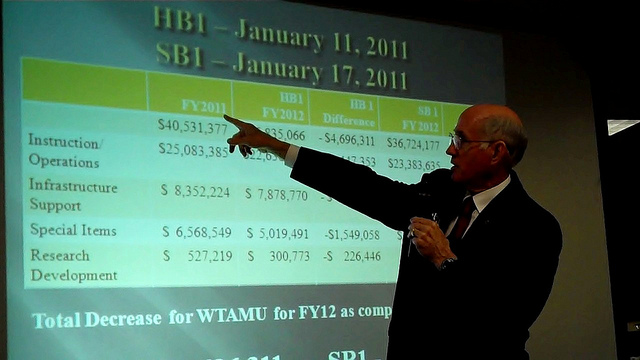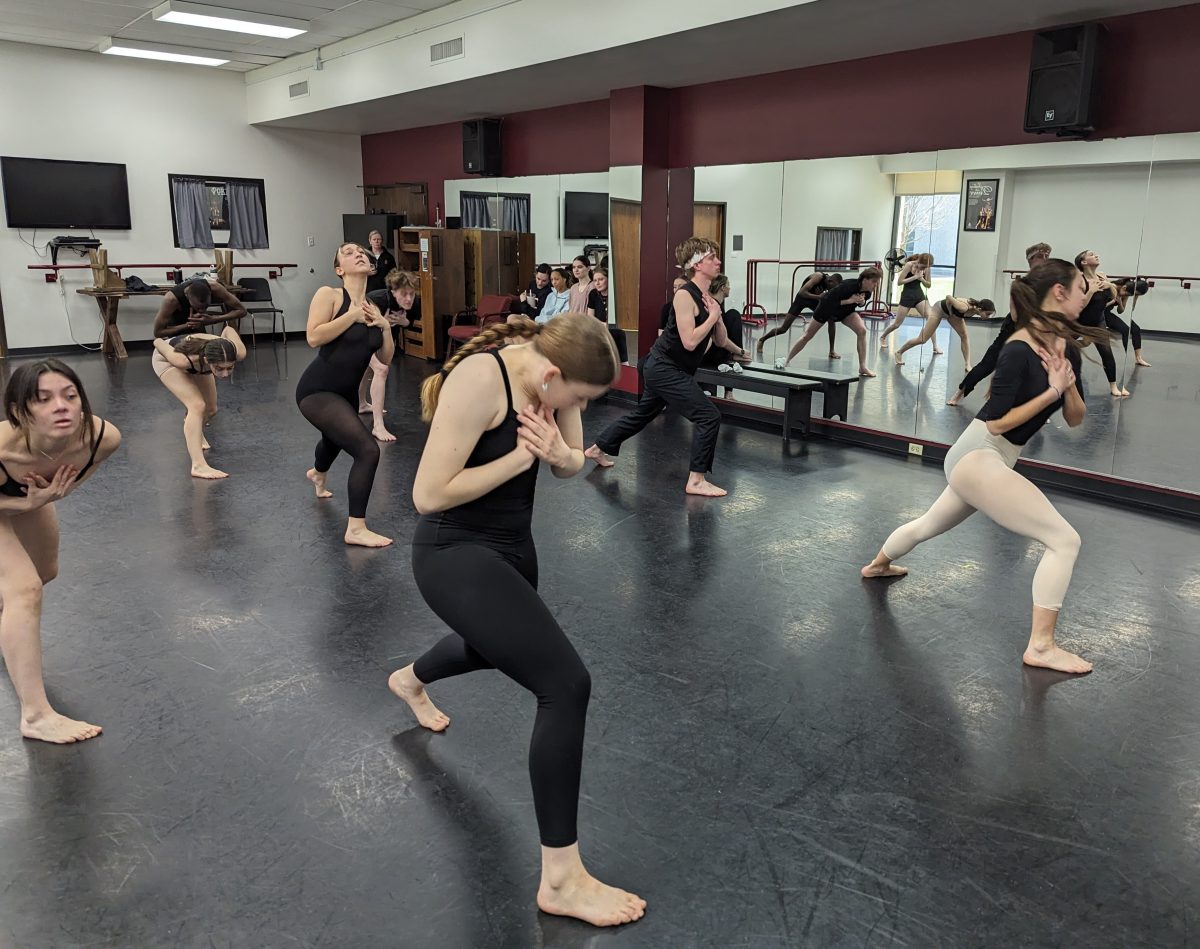
WTAMU faces a budget shortfall as the state of Texas demands cuts from higher education.
President O’Brien said WT has committed to give 7.5 percent of the budget for fiscal year 2011 back to the state to try and offset the deficit facing Texas.
“The state essentially is shifting the cost [of college] to the students and parents and away from the tax payers,” O’Brien said.
O’Brien said that students and universities should expect these cuts to continue.
“For the foreseeable future higher education is not going to get anymore than what it got in this current biennium,” O’Brien said.
The University is looking at a variety of ways to cut costs to make up for this budget shortfall. For example, these cuts have led to a freeze on all unnecessary hiring of new professors and other faculty. The University has even gone so far as to change the type of disinfectant it uses in hopes of cutting $40,000 from the budget. Tuition however is not on the list of things looking to be increased.
“At this point, we are not looking at an increase in designated tuition,” O’Brien said.
The Texas A&M system has put a two year moratorium on raising tuition. However, O´Brien said that when this moratorium expires it may be necessary to raise tuition.
“The University is looking at all sorts of different ways to save,” O’Brien said.
This will include a variety of fee increases such as the Student Service Fee, the Medical Service Fee and the Technology Fee. Other fee increases are also being considered to help offset the budget shortfall. The overall estimate is that there will be a 3.6 percent fee increase.
O’Brien emphasized that despite the fact that cuts have to be made, WT still ranks as one of the most cost effective institutions in the state.
“In terms of institutions in the state, we’re below the median in what we charge for tuition,” O’Brien said. “We’re 23 of 34.”
Dan Garcia, vice president for enrollment management, noted that WT is still the best alternative for an education.
“Even though we cost more than a community college, we cost less than other four year universities,” Garcia said. “We give more financial aid than other two year schools.”
Student jobs and class sizes were both issues brought up during the Town Hall Budget Meeting on Jan. 26. O’Brien admitted that there will likely be an increase in class sizes. Student jobs, however, have a brighter future.
“I don’t see that this will impact student jobs on campus,” O’Brien said.
The problem WT will face with an increase in class sizes is the limited number of rooms on campus that can hold a large number of students. O’Brien said the Institution is currently considering revamping areas of the Classroom Center to make larger classrooms.
Scholarships and financial aid are safe from all the budget cuts.
“We’re not reducing scholarship funding,” O’Brien said. “In fact each year we increase scholarship funding.”
Currently, 20 percent of designated tuition goes into scholarship funds. The University is also campaigning to get more money from private donors to help increase the funds available for financial aid and scholarships.
Garcia and O’Brien agree that the best thing that could happen for the University is an increase in enrollment.
“With every new student that enrolls we receive additional resources,” Garcia said. “If the state continues to take from higher education we’ll at least be able to maintain the same level prior to the cut [if enrollment increases].”
According to O’Brien a 1 percent increase in enrollment is the equivalent of $190,000 in tuition revenue.
Garcia said his main concern is that these cuts will make more students feel unable to achieve higher education.
“I’m concerned because over time the costs have gone up measurably,” Garcia said. “It can make some families believe it is out of reach. But financial aid has gone up every year.”
Garcia emphasized that programs like Buff Promise are available to help students. He also said that all students should be sure to fill out the FASFA. According to a report released by finaid.org, many students think that they don’t qualify for aid when in fact they do qualify to have a portion of their costs covered.















